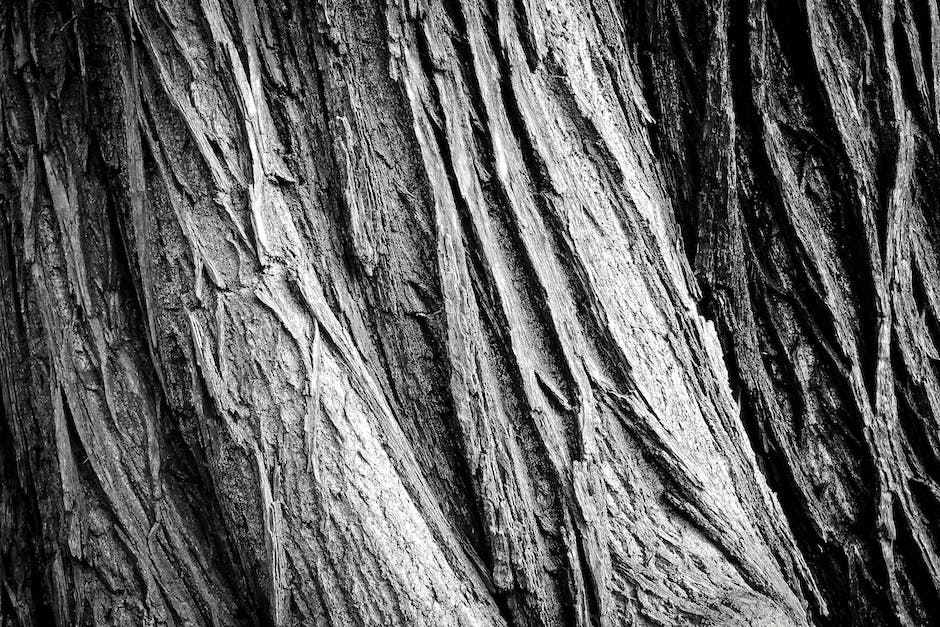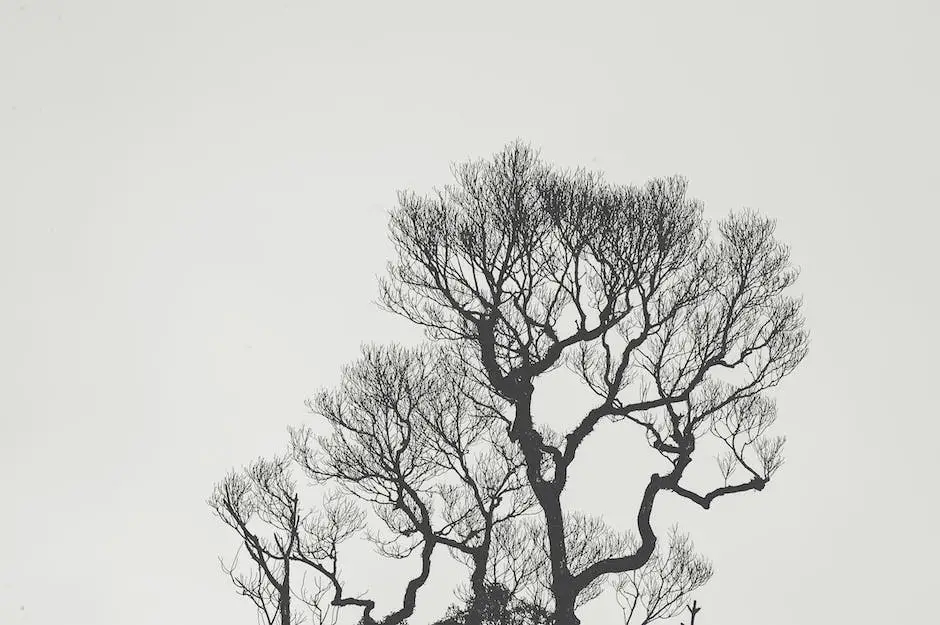In order to determine if your oak tree is dying, there are a few things you can look for. The first is whether or not there are any dead branches on the tree. If there are, this is a sign that the tree is not healthy. Another thing to look for is whether the leaves of the tree are wilting or turning brown. If they are, this is another sign that the tree is not doing well. Lastly, you can also look at the trunk of the tree. If the trunk is splitting or cracks are appearing, this is a strong indication that the tree is dying. If you notice any of these signs, it is important to contact a tree expert to get a definitive answer as to whether or not your oak tree is dying.
Look for these telltale signs that your oak tree is dying:
1. Branches are dying or dead. Look for bare patches or branches with no leaves.
2. Fungal growths. These can appear as brackets, shelves, or fans on the tree trunk or branches and may be a sign of decay inside the tree.
3. Cracks in the trunk. Deep cracks or holes in the trunk may be a sign that the tree is rotting from the inside out.
4. Leaning tree. A healthy oak tree will have a straight trunk. If your tree is leaning, this may be a sign that the roots are weak or damaged.
5. Dead leaves. Obviously, leaves falling off a tree is normal in the fall. But if you see leaves falling off your oak tree in the middle of summer or other times when they shouldn’t be, this could be a sign that the tree is dying.
What does an oak tree look like when it’s dying?
If you suspect that your oak tree is dying or dead, it’s important to have it checked out by a professional. They will be able to determine the cause and advise you on the best course of action. In some cases, the tree may be able to be saved, but in others, it may need to be removed to prevent further damage to your property.
It’s important to fertilize and mulch around trees to help support their roots and prevent new diseases from taking advantage.
What does a sick oak tree look like
Infected trees may show symptoms of general tree decline, including branch dieback, loss of leaves, and yellowing or browning of leaves in summer. Trees weakened by drought stress, wounding, or other injuries are most susceptible.
If you come across a tree with fissures in its bark, it’s likely a sign that the tree is healthy. However, if the bark is discolored or loose, it could be a sign that the tree is infected or prone to disease. Oak bark should usually have a brownish-green appearance. If you see any patches that are discolored, it could be a sign of disease.
What kills an oak tree?
Oak decline is a problem that can be caused by a number of different factors. These can include drought, defoliation, fungi that cause stem cankers or root diseases, and wood-boring beetles. The interaction of these factors may result in the decline and death of oak trees in a local or regional area.
A deep watering will invigorate the drought-stressed tree.
What are the first signs of oak wilt?
This is a common symptom of a virus infection in plants. The virus causing the disease is transmitted by insects and enters the plant through the leaves. The symptoms start from the tip of the leaves and spread towards the midrib and base of the leaves. The leaves turn yellow and brown and curl around the midrib. The plant sheds the leaves at the branch tips.
Sudden Oak Death is a disease that is characterized by the symptoms of lethal stem cankers in the bark, cambium, and outer xylem. This results in the tree being killed by the expand and girdle the stem. The cankers often ooze and bleed, which can be a characteristic of the disease. Tanoaks and certain oaks in the red oak subgenus are particularly susceptible to this disease and often exhibit shoot dieback.
Can you bring an oak tree back to life
It is important to note that while it is possible to revive some sick or dying trees, it is not possible to bring a dead tree back to life. This is due to the fact that trees rely on a number of factors in order to stay alive, including water, sunlight, and nutrients from the soil. Once a tree has died, these factors are no longer available to the tree and thus it is not possible to revive it.
Oak trees are very thirsty and can use up to 100 gallons of water per day during the growing season. This is why it is important to ensure they have a consistent supply of water.
How do you fix a sick oak tree?
While there is no treatment method to cure infected trees, there are ways to help prevent the spread of oak wilt. Trees and their roots infected with oak wilt should be professionally removed and destroyed (preferably by fire) as soon as possible. Infected trees should not be left standing, as they can continue to spread the disease. Proper disposal of infected wood is also important, as oak wilt can still be spread through wood chips and other debris.
Did you know that different types of oak trees have different lifespans? For example, the white oak tree can live for up to 600 years, while the red oak tree only lives for around 400 years at most. That’s a pretty big difference! It just goes to show that you can’t always judge a tree by its bark.
What are common diseases for oak trees
There are a variety of diseases that can affect oak trees, from Anthracnose and Bur Oak Blight to Oak Wilt and Powdery Mildew. In some cases, these diseases can be deadly, so it’s important to be aware of the signs and symptoms so you can take action to prevent or treat them. Some of the most common oak tree diseases include:
Anthracnose: This disease is caused by a fungus and affects the leaves and twigs of oak trees. Symptoms include small, dark lesions on the leaves that can eventually lead to leaf death.
Bur Oak Blight: This disease is caused by a fungus that affects the bur oaks. Symptoms include dark spots on the leaves and twigs, along with premature leaf drop.
Oak Wilt: This disease is caused by a fungus that affects the vascular system of oak trees. Symptoms include wilting leaves, discolored leaves, and eventually death.
Powdery Mildew: This disease is caused by a fungus that affects the leaves and twigs of oak trees. Symptoms include a white or gray powdery substance on the leaves and twigs.
Root Rot: This disease is caused by a fungus that affects the roots of oak trees.
Over watering an oak tree can lead to the roots rotting which can create serious problems for the tree. Be sure to only water as needed.
Is my live oak dead?
Healthy oak trees have green tissue under the bark. If the tissue is brown or yellow, the tree is likely dead.
There are several signs that indicate a tree is not healthy. If you notice any of the following, your tree may be sick:
1. Wilting: This is when the tree’s leaves droop and look limp. It is often a sign of drought stress or that the tree is not getting enough water.
2. Yellowing leaves: This can be a sign of nutrient deficiency, disease, or that the tree is stressed.
3. Brown and dying leaves and needles: This is often a sign of insect infestation or disease.
4. Spots or blemishes on leaves, fruit, and/or bark: These could be signs of disease or that the tree has been injured.
5. Fuzzy or moldy-looking patches: These are usually signs of disease.
6. Holes in leaves: These could be caused by insects, disease, or weather.
7. Dead, dying, or dropping branches: This is often a sign that the tree is not healthy and may need to be removed.
If you notice any of these signs, it is best to consult with a certified arborist to get a diagnosis and recommended course of action.
What is wrong with my live oak tree
The live oak tree is a sturdy tree that can withstand a lot of wear and tear. However, it is not immune to problems. Root rot, insect problems, and disease can all take their toll on a live oak tree. When a live oak tree can no longer grow and sustain itself, it will begin dropping its leaves. Common live oak diseases include oak wilt, fungal leaf spotting, root rot, and insect problems.
Oaks trees are known for their deep roots, which help to anchor the tree and give it stability. During periods of drought, or when the weather is particularly hot and dry, you may need to water your oak tree more frequently, about once every two weeks. Deep, slow watering is best, as it encourages deep root growth. Oaks trees also flush, or produce new growth, multiple times during the year, depending on the weather conditions.
What does an overwatered tree look like
If you see any of these signs, it’s a good idea to give your tree a little less water. Too much water can be just as harmful as too little water.
Pruning young oak trees is beneficial for several reasons. First, it helps the tree develop a strong central leading branch. Second, pruning helps the tree to produce more leaves and branches, leading to a more full and Healthy appearance. Finally, pruning also helps to remove any damaged or diseased branches, which can be a problem for the long-term health of the tree.
Can trees recover from oak wilt
There is no known treatment for oak wilt once a tree is infected. Infected trees will die and there is no way to save them. However, treatment can be applied to surrounding trees to prevent the spread of this disease.Oak wilt is a serious disease that can kill oak trees. If you have oak trees on your property, it is important to be aware of the symptoms of this disease and to watch for them. If you think your tree may be infected, it is important to contact a professional tree care service to have it evaluated.
Oak wilt is a serious problem for trees, and can easily lead to infection and death. However, you can easily treat oak wilt by trunk injection of the fungicide Propiconazole 143 using reloadable Chemjet® Tree Injectors. This will help to kill the fungus and prevent further infection and death of the tree.
What causes Sudden Oak Death
Phytophthora ramorum (the “disease”) is a water mold pathogen that causes several other plant diseases, including ramorum leaf blight, ramorum dieback, Phytophthora canker diseases, and sudden larch death. Outbreaks of the disease can be catastrophic, leading to the death of thousands of trees. The pathogen is not native to North America, and it is thought to have been introduced via infected nursery stock from Europe or Asia. Once introduced, the pathogen can spread rapidly through contaminated soil or water, or on the wind. infected leaves, twigs, and branches.
Red-brown cankers and oozing sap are often seen on the main trunk of infected oaks. Leaves may quickly wilt, but the tree may still be alive. If you notice these symptoms, it’s important to contact a certified arborist or tree care professional to assess the tree.
How do you treat Sudden Oak Death
There is no cure for sudden oak death, which is caused by a fungus. However, a fungicide can be used to allay some of the symptoms. Preventative actions, such as creating barriers between infected and non-infected areas and removing infected plants after they’ve been diagnosed, are the most successful.
More heavy rain events are causing drenching of roots and cutting off oxygen to trees. This practice is making trees more vulnerable to diseases such as root rot and insect infestations. The two-lined chestnut borer and the fall cankerworm are two diseases that are of great concern.
Warp Up
If your oak tree is dying, you will notice several telltale signs. The leaves will become yellow or brown and fall off the tree. The tree may also produce fewer acorns than usual. The bark may begin to crack and peel, and the tree may develop cankers. If your oak tree is exhibiting any of these symptoms, it is important to consult with a professional arborist to determine the best course of treatment.
If your oak tree is losing leaves, especially in the spring or summer, it could be a sign that the tree is dying. Other signs of a dying oak tree include thinning or bare branches, bark that is falling off or cracks in the trunk. If you see any of these signs, it is important to contact a certified arborist to come and take a look at your tree.
I’ve always been drawn to trees.
As a kid, I spent most of my free time outside, climbing, exploring, and trying to figure out the names of the trees around me.
That early curiosity eventually led me to study arboriculture and horticulture at Michigan State.
Later, I completed a degree in forestry at the University of Michigan.
I’ve been working in tree care and education ever since.
These days, I enjoy helping people learn more about the trees in their own backyards.
How they grow, how to care for them, and why they matter.
You don’t need to be an expert to appreciate trees.
A little curiosity goes a long way.
